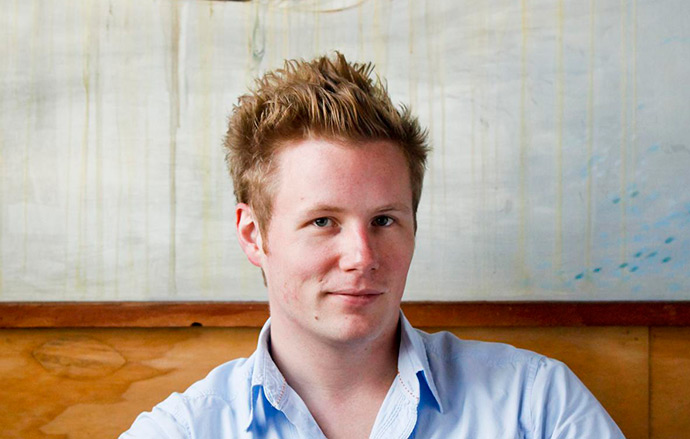
Thomas McNaughton’s universe has expanded considerably since we last spoke with him: he and his team have added Central Kitchen and Salumeria to their San Francisco restaurant family, and he’s also started working on a cookbook that’s based on his first venture, flour + water. Below, the three-time finalist for our Rising Star Chef of the Year award brings us up to speed on the state of Central Kitchen, tells us what we can expect to see in his book, and shares his expert advice on making pasta at home.
--
JBF: When we interviewed you last year, Central Kitchen was a few months away from opening. You said that it was going to be part of the ongoing conversation about what California cuisine means. Can you talk about how the restaurant defines that term?
TM: Central Kitchen doesn’t necessarily define it, but it contributes to an ongoing search for discovery in the evolution of Californian cuisine. We use produce that is available locally and seasonally. The Bay Area has a certain mindset towards food, which is a key part of the evolution of California cuisine. Locals are very intelligent about ingredients. They want to know how and where things are grown, which inspires us to keep thinking about food and the techniques we use to enhance the overall guest experience.
It was very tough opening Central Kitchen and Salumeria at the same time—it’s certainly a steep learning curve, but we’ve all learned a lot. I’m very proud of where Central Kitchen, Salumeria, and the Ne Timeas Restaurant Group as a whole are today. Chef de cuisine Ryan Pollnow has been instrumental in elevating the food to a very high standard.
JBF: Your first restaurant, flour + water, is known for its handmade, regional Italian pastas. What are your favorite pasta shapes to work with?
TM: Stuffed pastas are the most delicate and interesting textures to work with. If pushed, I’d say a semolina-based bigoli made on a hand extruder called a torchio is one of my favorites. The texture makes it an excellent vehicle for flavor.
JBF: We've seen mentions of your "pasta lab" on Twitter, which conjures up some pretty cool visions for us. What are you working on there now?
TM: The Dough Room (a.k.a. the prep kitchen) houses pasta production for flour + water. In the Test Kitchen, which transforms into a private dining setting at night, we produce pasta to sell at Salumeria. We sell freshly made prepackaged pasta, or you can scoop it up by the pound. Every week we have a different selection on offer, and people can also choose from Salumeria’s selection of sauces, fresh produce, salumi, cheese, and wine—everything they need for a delicious meal at home.
JBF: We’ve also read that education is very important to you, and that you have a library in the test kitchen for your cooks to use above flour + water. Do you have any go-to resources for researching pasta techniques or history?
TM: History is the most relevant research tool with pasta. Researching traditional techniques and learning about Old World practices is integral to what we do. Culinaria Italy is a great basis for building a solid foundation of what regional Italian food is.
JBF: What are your favorite cookbooks?
TM: I love the approach of professional cookbooks and how artistic they can be. For visual appeal, Au Pied de Cochon by Martin Picard. For technical skill, Ryan Farr’s Whole Beast Butchery. I wish I’d had a book like Ryan Farr’s to reference when I was learning about butchery.
JBF: Speaking of cookbooks, you're doing a flour + water cookbook with Ten Speed. What's the ETA and what can you tell us about it? Are you doing any of the writing?
TM: The ETA for the cookbook is fall 2014. When we started the cookbook project I had no idea it would be such a massive workload. It’s been a great learning experience for myself and the Ne Timeas Restaurant Group as a whole. It’s a manually descriptive and artistic cookbook. It’s full of how-tos on pasta. Everything we do in the restaurant is in the book—we’re not holding anything back from readers. All the recipes are created and written by me.
JBF: Last question: what’s one specific technique or tip that anyone who wants to make pasta at home should know?
TM: Do not overhydrate the initial dough mix. You want the dough to be as dry as possible—that way you hardly need to add any raw flour during the roll-out process. Otherwise, just practice, practice, and practice.
About the author: Anna Mowry is senior editor at the James Beard Foundation. Find her on Twitter and Instagram.






